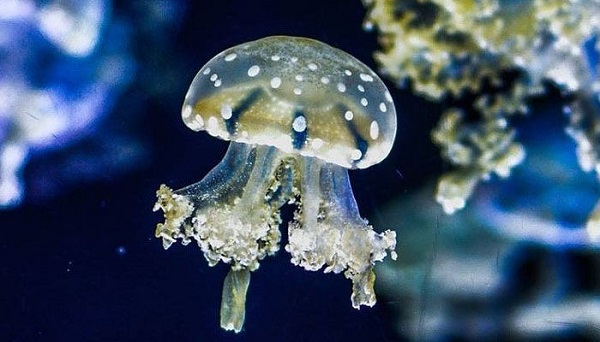Jellyfish are capable of reproducing both asexually and sexually. The most common way in which jellyfish multiply in the polypoid phase (after the larval state) is asexual since a specimen only needs to release the eggs or sperm that it keeps inside so that they recombine in the water and the larvae are born
From this asexual reproduction sexed jellyfish are born. In this way each jellyfish always alternates between a cycle of sexual reproduction and an asexual one, depending on the state of the life cycle in which it is located.
Gestation in Jellyfish
Jellyfishes have a gestation period of 2 – 3 days. They have an average gestation period of 2 days.
The life of a jellyfish begins in the tentacles of the mother as a small egg, from which an oval-shaped larva called a planula is born. When ready to be born, the seedlings separate from the mother and begin to float on the surface on their own. A few days later they descend to look for a solid substrate on the seabed to adhere to. It is at this time that the jellyfish begins to be called a polyp.

During the polyp phase, the jellyfish undergoes a first metamorphosis, where the simple oval shape is replaced by another more similar to a crowned sac or cup. At the basal end of the polyp is the suction cup that fixes it to the seabed, while at the top is visible a small hole that functions as a mouth and as an anus. It does not yet look like real jellyfish and can be confused with a sea anemone or other type of marine invertebrate.
Through the intake of plankton, the polyp matures little by little and develops other parts of its anatomy such as the tentacles. When it comes time for budding, the polyp begins to reproduce asexually until it forms a large colony with small new polyps. Polyps literally sprout from the center of the parent’s body, using a central nucleus that is known as the trunk. The new polyps are forming feeding tubes, which serve to obtain nutrients.
How long the polyps remain as such will depend on the environmental conditions. Some may extend for a long time (several years or decades) this stage of their gestation if the conditions are not conducive to their further development. Finally, when they are ready to take the next step, they shed the polyp colony and in this way, hundreds of thousands of baby jellyfish emerge.



